Spending a legacy on a sound system – what to upgrade?
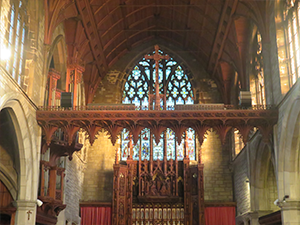 Recently Blaydon Communications were contacted by a local church who had kindly been left a legacy and needed some advice. The sound system in the church had not been touched for many years so it was decided that a beneficial use for the money would be to upgrade the sound system. Conflicting online advice and sheer options for hardware had proved overwhelming, so it was time to draft in some professional help. The company's managing director Paul Dougherty takes up the story.
Recently Blaydon Communications were contacted by a local church who had kindly been left a legacy and needed some advice. The sound system in the church had not been touched for many years so it was decided that a beneficial use for the money would be to upgrade the sound system. Conflicting online advice and sheer options for hardware had proved overwhelming, so it was time to draft in some professional help. The company's managing director Paul Dougherty takes up the story.
Our initial visit to the church was mainly a fact-finding mission to determine what the expectations of the church was from the proposed system. Once we knew what was expected we could work back through the technicalities of achieving the desired outcome without having to ask any technical questions to the church. Using this approach requires no technical knowledge from the end users and reinforces the fact that all we are interested in is making sure the system does it needs to when it is finished.
Although the existing system was irrelevant as it was to be replaced, we did of course have a good look at it! It is often good practice to look at how the old system has been designed and installed when working churches, as using the same cable routes and installation techniques can often help with any heritage committees or listed building concerns. Most churches are happy to have new systems in place when you have a solution that has little aesthetic impact or destructive works.
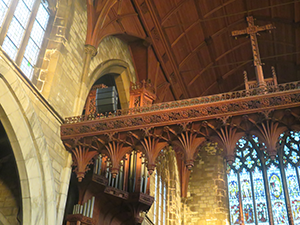 After assessing the existing system, and listening to the issues being experienced with intelligibility, it was decided that we would put forward a cheeky proposal and see if we could get away mounting some speakers on the rood screen. After all, this central position in the church is an ideal acoustic position to broadcast from. Just think, for hundreds of years preachers and clergy have stood in that central position and provided clear audible sermons to the congregation, so it makes sense to put speakers there to do the same job. Problem is you rarely get away with it, but this time the clarity of the sound system was deemed important enough to allow the proposal to be accepted. The replacing and repositioning of the loudspeakers would have the biggest impact on intelligibility, so that is what we advised the legacy spend should be concentrated on.
After assessing the existing system, and listening to the issues being experienced with intelligibility, it was decided that we would put forward a cheeky proposal and see if we could get away mounting some speakers on the rood screen. After all, this central position in the church is an ideal acoustic position to broadcast from. Just think, for hundreds of years preachers and clergy have stood in that central position and provided clear audible sermons to the congregation, so it makes sense to put speakers there to do the same job. Problem is you rarely get away with it, but this time the clarity of the sound system was deemed important enough to allow the proposal to be accepted. The replacing and repositioning of the loudspeakers would have the biggest impact on intelligibility, so that is what we advised the legacy spend should be concentrated on.
With the upgrade of the loudspeakers accepted, new loudspeaker cabling and a new amplifier was required too. After 30 plus years of service the amplifier had certainly served its time!
To offer potential cost savings, we completed an honest assessment of the microphones, and although the cabling did need replaced, the microphones were in reasonable condition and from a good manufacturer, so they were excluded from the main work for budget purposes. An option for new microphones for the pulpit and lectern were offered as an extra and as it happens, the legacy must have been quite generous, as when we submitted our proposal it was decided that there was enough money to replace the cables and the microphones too!
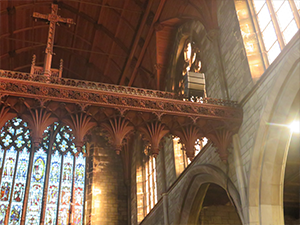 To be honest, this level of upgrade would have certainly proved a wise investment, but even after the main bulk of the work was accounted for there was still money left in the pot for further enhancements. This was put to good use by upgrading the wireless microphone system. The old system was operating on an illegal frequency (for more info about the illegal frequencies and what can be done visit https://www.justmics.co.uk/microphone-retune), but an offer to retune the system was included in the initial proposal. Even though the old microphones would have ‘done the job’ they were going through batteries at a shocking rate and there’s nothing worse than a flat battery halfway through a sermon!
To be honest, this level of upgrade would have certainly proved a wise investment, but even after the main bulk of the work was accounted for there was still money left in the pot for further enhancements. This was put to good use by upgrading the wireless microphone system. The old system was operating on an illegal frequency (for more info about the illegal frequencies and what can be done visit https://www.justmics.co.uk/microphone-retune), but an offer to retune the system was included in the initial proposal. Even though the old microphones would have ‘done the job’ they were going through batteries at a shocking rate and there’s nothing worse than a flat battery halfway through a sermon!
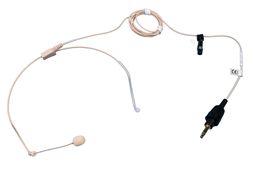 To upgrade the wireless solution, we offered a licence free, but fully legal system, which included charging pods that the microphones would simply drop into when not in use. This ensured that they’d be ready for use when they were needed. The inclusion of a headset microphone for the belt pack transmitter upped the clarity level again, as having a microphone close to your mouth is the best solution for any reverberant space. It also offers a fixed level of audio irrespective of how animated the clergy become. There is a downside of course, and that is it will always be sure to pick up their singing too!
To upgrade the wireless solution, we offered a licence free, but fully legal system, which included charging pods that the microphones would simply drop into when not in use. This ensured that they’d be ready for use when they were needed. The inclusion of a headset microphone for the belt pack transmitter upped the clarity level again, as having a microphone close to your mouth is the best solution for any reverberant space. It also offers a fixed level of audio irrespective of how animated the clergy become. There is a downside of course, and that is it will always be sure to pick up their singing too!
So, with new speakers leading the change thanks to perfect placement, and the required new amplifier and optional microphone upgrades, is there anything else that could be added? Well of course there is!
The old system had limited media capabilities, with the only offering being that of a CD player. Although that’s a lot better than some churches that still use cassette, it is still a long way off covering the multitude of potential sources of audio on the market today. To bring the media options up to date, an optional extra of a multiformat unit covering, CD, USB, wired Aux, and Bluetooth was put forward and accepted.
So, in answer to the question what you should spend your money on, here’s our opinion …
In the first instance, you shouldn’t spend any money until you’ve received some good advice from a reputable company. In our industry that advice is often given free of charge with the provider just being grateful for the opportunity to put forward a proposal for consideration.
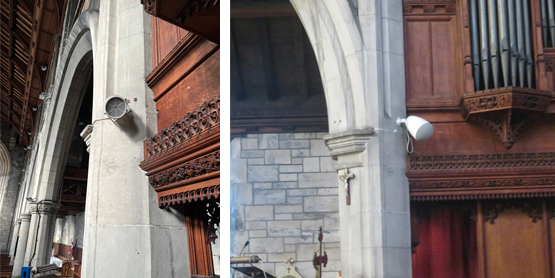
Before & after
The next step is to consider what is wrong with the old system and why is it wrong? Parts of a sound system with moving parts are often a good place to start. Loudspeakers become less efficient, and microphones too, as internal parts degrade over years resulting in poor frequency response and output, basically they sound worse. Churches are an unforgiving environment with cold and damp conditions in the winter months and probably not much better in the summer months either; just check your heating bills for evidence of that!
Although moving parts in loudspeakers, microphones, cassette decks, and CD players will degrade, don’t forget about the electronics too. Components, solder joints, and volume controls suffer with age too and result in poor audio reproduction. If the budget is there, try and replace the electronics as well.
Radio microphones are a nice extra if the budget is there, but often these microphones aren’t left out in the open so therefore slightly better off than the wired counterparts that are left in the cold day in day out. If you can afford to replace them then happy days, but it is a place you could possibly save money. This of course assumes that they do work and do operation on a legal frequency!
Never buy cheap, always spend wisely. If you can’t afford to do everything, then do what you can now and budget for the rest later. Buying all cheap kit so you do everything really isn’t a sound investment.
For further information visit www.blaydoncomms.co.uk













